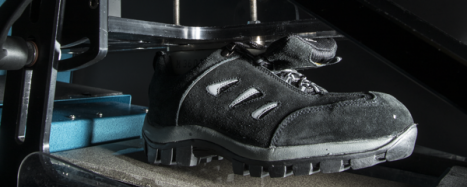Why do slips occur?

In 2008, slips and trips were responsible for 6.9% of occupational sprain and strain injuries and accounted for 3% of all occupational injuries and illnesses. The Bureau of Labor Statistics reports that falls on the same level and falls to a lower level have incidence rates per 10,000 full-time workers of 18.0 and 7.3, respectively. By the year 2020, it has been estimated that slip and fall-related injuries will approach 17 million annually with associated health care costs in the billions. To prevent slips and slip-related injuries, it’s necessary to understand the conditions which increase slip risk and the terminology.
Available Friction. Why do slips occur? To discuss why slips occur, first the role of friction must be introduced. Friction can simply be defined as a force that opposes motion. For example, if you drag the sole of your shoe along a dry tile floor, you'll likely feel a resistance to that motion, your shoe may even squeak.
The weight (W) of the block is equal to the vertical force (N) acting upwards. This simply represents Newton’s 3rd Law of motion, which states that for every action there is an equal and opposite reaction. If a force (F) is applied to the block, motion of the block is resisted by the friction force (Ff). The friction force (Ff) is proportional to the vertical force (N), where Ff = µN. The coefficient of friction, mu (µ), is commonly referred to as available friction. With respect to slip and fall-related literature, available friction or the coefficient of friction is abbreviated COF.
Available friction is the friction provided by the environment, more specifically the shoe-floor interface. Both the floor and the shoe can influence available friction for a variety of reasons. The friction measured at the shoe-floor interface can be represented by either static or dynamic coefficients. The static coefficient of friction represents the friction requirement to deter slip onset, whereas the dynamic coefficient represents the friction requirement to deter slip continuation and uncontrollable foot slide, i.e. slipping. The dynamic coefficient of friction is most often associated with descriptions of available friction. Often, the term available friction is used interchangeably with slip resistance. For example, assessing the slip resistance of a shoe sole means determining the amount of available friction it provides or its COF.
2019-07-12 17:42

